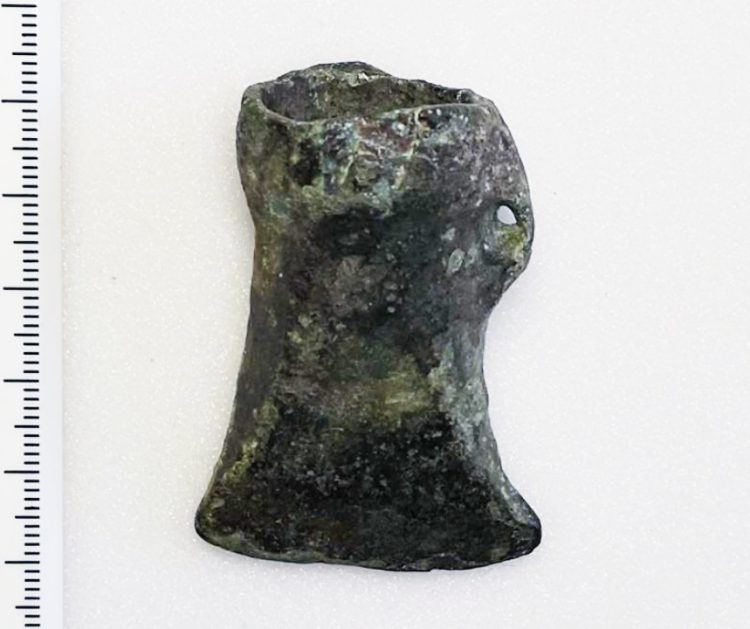Socketed axe with loop and extended neck of the Norwegian variety, it has facets on the broad side. The sides are almost straight. Green/grey patina, which has peeled off in spots. The ax is decorated with the characteristic pattern of crossing ribs: three transverse ribs parallel to the hem, crossed by three vertical ribs. Two of the vertical ribs follow the sides of the axe. There is no internal shaft support. The hole is incomplete; this happened during casting when there was not enough metal in the mold. The cross-section around the base is hexagonal, while the blade is more or less rectangular. Length: 10.6 cm. Width: 5 cm above the edge. Photo: Svein Skare © University Museum in Bergen, CC BY-SA 4.0
Context:
Found in 1955 on a path west of a large crag, 300 m N from Voss Folkemuseum and 100 m above the plateau where the buildings are located, 275 m above sea level. As the ax had not been there for long, it had presumably come down from the hillside above during the winter.
Location:
Mølster (gnr, 46/1), Voss, Hordaland
Date:
Axes of the Norwegian variety are dated to the Younger Bronze Age period 4-5.








































